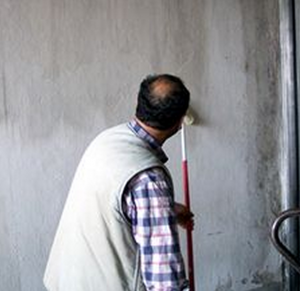 If you have a damp basement floor, it can only lead to issues unless properly and quickly dealt with. Failure to do this will mean structural damage to your property. It isn’t difficult to waterproof these areas, and in many instances it doesn’t require the help of a professional. The best part about basement waterproofing is its cost – you’ll find you don’t need to spend a great deal of money to completely fix this issue.
If you have a damp basement floor, it can only lead to issues unless properly and quickly dealt with. Failure to do this will mean structural damage to your property. It isn’t difficult to waterproof these areas, and in many instances it doesn’t require the help of a professional. The best part about basement waterproofing is its cost – you’ll find you don’t need to spend a great deal of money to completely fix this issue.
Before you can start with any waterproofing, you need to make sure the area is clean. Clear everything off the floor until its bare, taking your broom and sweeping thoroughly. Be certain you clear everything from corners and crevices.
When you’ve done that, use a wet/dry vac to continue cleaning and pick up any objects you might have missed. To complete the cleaning portion of this process, mop the floor with clean water. This way, you’ll be certain there’s nothing on the floor that can stop waterproof materials from bonding to concrete. Make sure no one enters the basement after this process, and leave the floor to dry completely.
Now that the area is clean and dry, inspect the walls and floor for cracks. If you find any, you’ll need to fill them with concrete. Let it dry, then sand down until it’s smooth. Repeat the vacuuming and mopping process, then let the basement dry again.
Once its dry again, you can put on primer. You need to have good waterproof primer that’s intended for basements. Also, be sure to follow any instructions on the primer that you will be using on your damp basement floor. It might need to be diluted. Apply with a brush in the corners and around any edges, and use a roller for main areas.
You will only need one coat of primer on the damp basement floor. Once finished, let it dry completely before attempting the next step. Also, while you are waiting for it to dry, you  can clean the brush and roller to remove any paint.
can clean the brush and roller to remove any paint.
With your base primer dry, you will be ready to apply the waterproof agent. As with the primer, use a brush for edges and corners, and a roller for open areas. Apply a good coat of waterproofing agent to the area, then leave it to dry.
You’ll achieve better results if you apply a second coat of the waterproofing agent to the basement. Your goal is to prevent dampness from penetrating again, so you need the coverage to be absolute. Any small gaps will allow moisture to enter and will defeat the purpose of this whole project.
After the coats of waterproof paint are dry, inspect the area visually to see any spots you may have missed. Pay close attention to areas surrounding the door and other openings. If you follow these measures, your damp basement can be turned into a useful room again.
